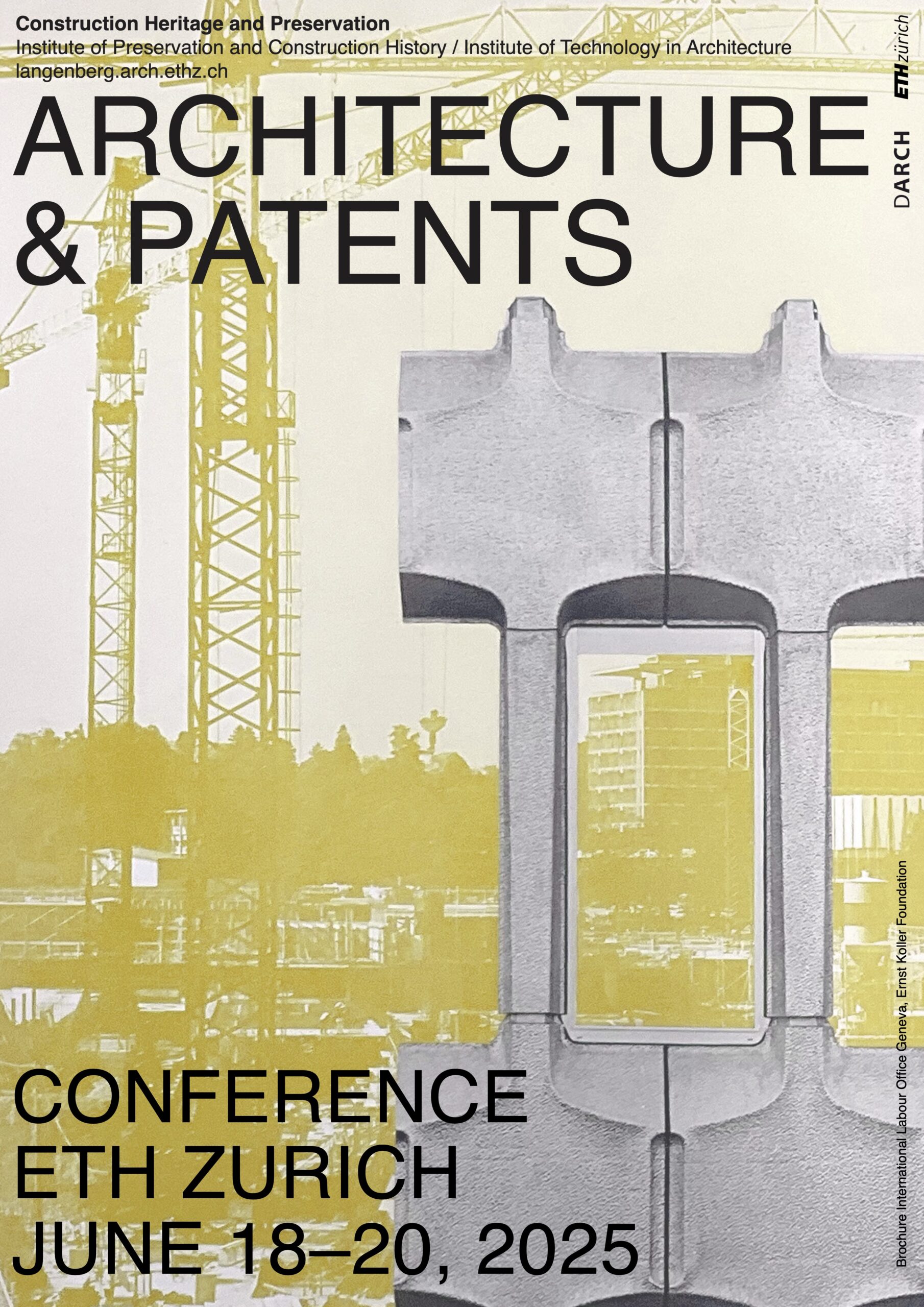
Zurich, Swiss Federal Institute of Technology (ETH)
June 18–20, 2025
Extended Deadline: January 20, 2025
Abstracts (500 words max.) and a short CV (one PDF file) should be sent to patents@arch.ethz.ch
At the dawn of the 19th century, the invention of new materials, structures, and machinery gradually began to transform the relationship between architecture and architectural tradition, a time coinciding with the establishment of national patent systems. Although it is hard to imagine the innovative, technical, and creative aspects of architecture without patents, it has only been in recent years that they have received increased academic attention in the history of architecture and construction. The ongoing research project “Architecture & Patents” at the Chair of Construction Heritage and Preservation, Prof. Dr. Silke Langenberg, ETH Zurich, investigates the role of patents within the extensive building stock of the ETH Domain from 1855 to the present day. Within the framework of the project and to provide an academic platform for exchanging on the topic of architecture and patents in a wider sense, an international conference is planned for June 2025. The following topics are suggestions – alternative questions are welcome and encouraged.
Selection and Focus: In most cases, the studies of patents are tethered to individual patent applicants and the re-tracing of invention genealogies based on company initiatives. Or they are limited in their focus on various patents of similar character. The conference encourages a critical examination of the selective mechanisms behind the commonality between patent histories:
Fascination with Patents: In his seminal book, “Mechanization Takes Command” (1948), Sigfried Giedion analyses inventions and technologies adopting a cultural-historical perspective on the consequences of mechanisation. Neither questioning patents as an historical source, an economic actor, nor the context of its historical significance, Giedion’s approach of an “anonymous” history coins patents as “objective witnesses.” Much later, within the context of the 14th Venice Biennale of Architecture, Rem Koolhaas, in his function as architect and editor of “Elements of Architecture” (2014), shifts the focus onto the very “elements” constituting architecture. Whereas patents appear as markers of innovative steps, their actual or historical relevance is never fully assessed. Taking a closer look at cultural-historical approaches on patents (such as those of Giedion and Koolhaas) would open up the discipline to the following questions:
Patents and the History of Knowledge: Histories of patents lead to histories of knowledge and science. By crystallizing constructive know-how and officiating innovation in materials, the invention of machines, and building technologies alongside other areas relevant to construction, patents allow architecture to be analysed through sequences of developments. In “Prior Art” (2024), Peter H. Christensen has recently examined historical power structures within the intellectual property sector and drawn attention to globalized and post-colonial trade and distribution techniques for building materials and construction methods.
Mass and Void: The number of patents granted internationally has been steadily increasing since the 1860s. The 1980s then brought about an almost exponential growth in worldwide patent applications. Thus, researchers are often faced with the challenge of either having to adequately evaluate an enormous amount of data, or finding ways to gain access to historical patents that may, for example, not be available in digitised form and in relevant databases.
The Patent as Construction Heritage: Institutional heritage preservation has long since inventoried a building stock in which patents are already of major importance. This includes building systems since classical modernism (initially in timber construction, later, for example, also in the prefabrication of large panels), but also individual façade elements, colours, building services, construction processes, etc. If patents are aimed at reproducibility, monument protection concentrates on the specific and individual. Contributions that address patents from the perspective of heritage studies are very welcome:
Digital Architecture: While the patent system was relevant in virtually all branches of the industry, digitalisation opened a gap in patent protection. Computer programs, for example, are not patentable unless relating to a technical system such as a control system. Although digitalisation has played an increasingly important role in the construction industry since the 1970s at the latest, patent specifications only indirectly reflect this shift. The ongoing discourse on the patentability of so-called “computer-implemented inventions” (CIE) continues to demonstrate the problematic nature of digital intellectual property to this day.
To submit a proposal to the conference, please send an abstract of 500 words max. with a short CV (one PDF file) to the following address by January 20, 2025 (extended deadline): patents@arch.ethz.ch. Acceptance notifications will follow by the end of January 2025. A selection of contributions is planned to be published after the conference. For any questions, please contact: patents@arch.ethz.ch
Call for Papers (EN)
Call for Papers (DE)
